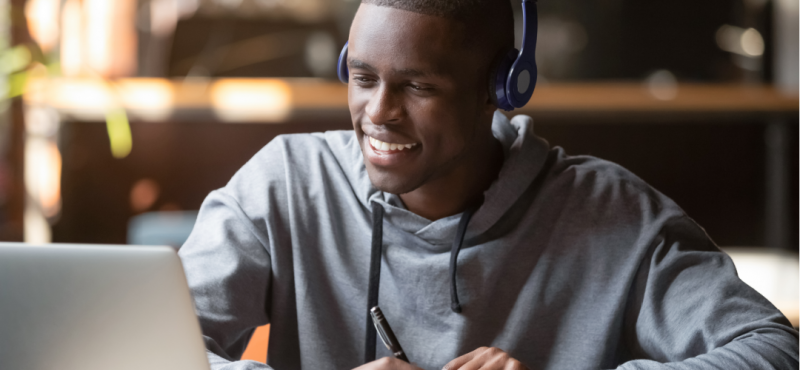With 642 schools and over 350,000 students, the Chicago Public Schools (CPS) system is one of the largest and most diverse school districts in the nation. It’s also a Title I district, with more than 70% of students qualifying for free or reduced-cost lunch through the National School Lunch Program.
When the COVID-19 pandemic hit, many Chicago students did not have a broadband internet connection at home. For these students, distance learning was going to be a challenge. So, when CPS started advanced planning for the Fall 2020 semester, a coalition of public, philanthropic, and private organizations – including internet provider Comcast – came together to ensure students could get connected and stay connected.
A Long-Term Solution for Students
Chicago Connected, which launched in June of 2020, is one of the largest and most comprehensive efforts by any city to provide no-cost, high-speed internet to students and their families. It is also part of a larger, national effort called K-12 Bridge to Broadband, which provides a path for school districts and other community partners to fund home broadband connections for students in need.
Through Chicago Connected, CPS, Comcast and their community partners will help as many as 100,000 Chicago students and their families get connected to the internet. The program is citywide in scale, but places additional emphasis on delivering digital equity for South and West Side neighborhoods where COVID-19 has laid bare the lack of access to health, retail, and other services.
“Reliable, high-speed internet is one of the most powerful equalizers when it comes to accessing information,” says Chicago Mayor Lori Lightfoot. In addition to ensuring students can participate in distance learning, a broadband connection also allows families to build career skills, apply for jobs, register to vote, and stay up to date on current events. “The Chicago Connected program is a critical component of our Solutions Toward Ending Poverty (STEP) agenda and the efforts to end poverty and also part of our mission to drive improved academic outcomes at CPS,” Mayor Lightfoot added.
The first two years of the four-year program will be funded through a combination of CARES Act dollars – which have also been used to provide funding for student laptops – together with the support of philanthropic leaders, including the Ken Griffin, Crown Family Philanthropies, the Chicago Community COVID-19 Response Fund (through the Chicago Community Trust and the United Way of Metro Chicago), Illinois Tool Works, the Pritzker Traubert Foundation, the JPB Foundation, and the Joyce Foundation. An additional joint commitment from President Barack Obama and Mrs. Michelle Obama, the MacArthur Foundation and the Chicago Community Trust will support efforts by community-based organizations on the South Side. The City of Chicago and Chicago Public Schools will provide connectivity funding for subsequent years.
The Critical Role of Partnership
The partnership with Comcast and a network of community-based organizations (CBOs) is groundbreaking. Thanks to a history of work with CBOs throughout Chicago and a decade of success connecting low-income families through its Internet Essentials program, Comcast was able to swing into action to advance the City’s goal to connect up to 100,000 CPS students.
Working collaboratively, the Chicago schools identified eligible students and families, while Comcast provided communications strategies and helped with onboarding, installation, and digital skills development. Comcast also had the capacity and operational support system in place – including call centers, technicians, a COVID-19 health and safety plan, and self-install kits – to make an initiative like this happen during a pandemic. In fact, Comcast has launched more than 70 similar partnerships across the country since the pandemic hit, including in Atlanta, Sacramento, Pittsburgh, Portland, Ore., and Washington, D.C.
CPS, City Hall, and Comcast also collaborated with CBOs to help families get online. “We worked with Chicago Public Schools, Kids First Chicago, and City Hall to help size the universe of need,” says Matthew Summy, the Vice President for External and Government Affairs for Comcast Greater Chicago. “We liked that they said: ‘This is a foundational need, let’s tackle this for the long term and include skills development in the initiative.’ That helped galvanize other parties.”
Community outreach has been crucial for crossing the bridge from access to adoption. In total, 35 CBOs qualified to be part of the effort. “With their engagement and commitment to digital equity, the other aspects of the program begin to fall into place,” says Summy. “They’re helping build awareness of the program in the communities they serve, and they’ll be hubs for digital skills training, which is an important aspect of the program. Together, we’re communicating to potential enrollees through various channels, from large mailings, to calls, to texts.” The CBOs can also reinforce that families don’t need social security numbers to sign up, that legal status and language aren’t barriers, and that credit history is not a factor.
Connectivity Shapes the Future
Going forward, the internet connectivity provided by Chicago Connected stands to make lasting changes in the City’s education system as it evolves, post-pandemic. This could mean, for example, relying on remote learning in order to offer enrichment or other programming to more students.
As Barbara Goodman Manilow, board chair of the Crown Families Philanthropies and a participating organization, puts it, “No student or family should be cut off from opportunities to learn, connect, and thrive—especially at this moment when our devices have become our classrooms, doctors’ offices, and more. Chicago Connected represents a critical step on the path to equity for students city-wide.”
Thanks to Chicago Connected, and the public, private, and philanthropic organizations that made it possible, no Chicago student has to go without the fundamental broadband internet service or device they need to continue learning.
*****
Thousands of Chicago students will soon have a broadband connection. However, across the country, thousands more continue to struggle in education, employment, and daily life without high-speed internet. Learn more about our efforts to provide quality connectivity to every student and sign up to stay involved.
